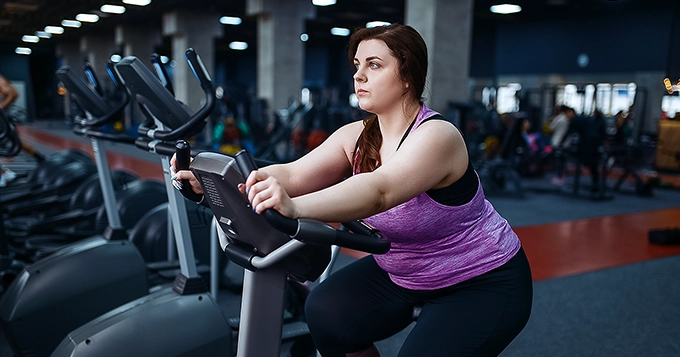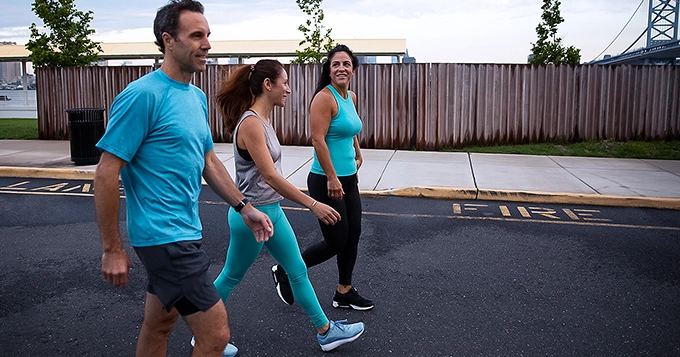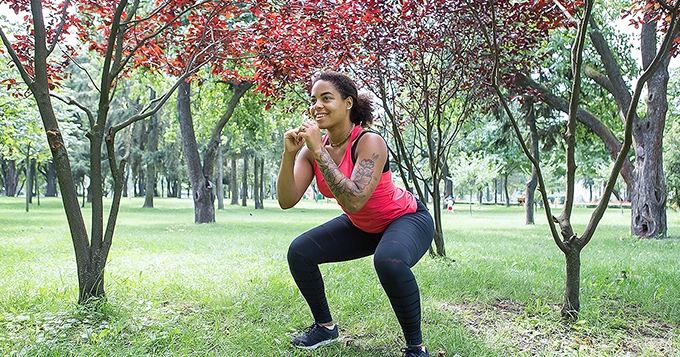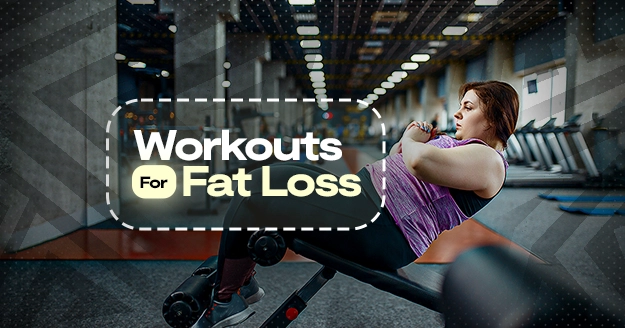Healthy fat loss comes with a long list of benefits, including higher energy, a happier mood, stronger muscles, greater self-esteem, reduced blood pressure, and more.
Fat loss is a common fitness goal for many individuals striving for a healthier lifestyle. While diet plays a significant role, incorporating effective workout strategies can boost your workout for fat loss efforts. Let’s explore how to optimize your workouts for fat loss, providing practical tips and guidelines for your fitness journey.
-
Ensure you reach your fat-burning heart rate zone.
You can gauge the intensity of your workout by monitoring your heart rate. The average person’s heart beats 60 to 100 times per minute at rest. Exercise causes an increase in heart rate. And, your heart rate will rise in proportion to the intensity of your exercise.
When you exercise in your fat-burning heart rate zone, your body uses your fat reserves rather than simple sugars and carbs as the primary energy source—fat loss results from this.
Approximately 70% of your maximum heart rate is the fat-burning zone.
Fat-burning heart rate chart
| Age | Estimated fat-burning heart rate in beats per minute (BPM) |
| 18-20 | 140 |
| 21-25 | 136-139 |
| 26-3 | 133-136 |
| 31-35 | 129-132 |
| 36-40 | 126-129 |
| 41-45 | 122-125 |
| 46-50 | 119-122 |
| 51-55 | 115-118 |
| 56-60 | 112-115 |
| 61-65 | 108-111 |
| 66-70 | 105-108 |
| 71-75 | 101-104 |
-
High-Intensity Interval Training (HIIT) HIIT burns calories in a short amount of time.
High-Intensity Interval Training, or HIIT, is an efficient workout method that helps you burn calories in a short time. Even after exercising, your body keeps burning calories because your metabolism stays active.
It involves multiple rounds where you alternate between a period of high-intensity exercise that boosts your heart rate to at least 80% of your maximum, followed by a period of lower-intensity exercise.
For instance, in a HIIT session using a stationary bike, you might cycle as fast as you can with high resistance for 30 seconds, followed by a few minutes of slow, easy cycling with low resistance. This completes one “round” or “repetition” of your HIIT workout, and typically, you’ll do 4 to 6 rounds in a single session.
The specific duration of your exercise and recovery will depend on the activity you select and the intensity of your workout. In any case, the core of high-intensity intervals is engaging in brief bursts of vigorous exercise that significantly elevate your heart rate.
How to get started with HIIT?
Incorporating high-intensity intervals into your workout is relatively straightforward. First, select your preferred activity, such as running, biking, or jumping rope. Next, you can explore various combinations of exercise and recovery durations, experimenting with the time spent on intense activity and the time allocated for recovery.
-
Low-Intensity Steady-State Cardio.
Cardio is a shortened term for “cardiovascular activity,” and it’s also commonly known as aerobic exercise.
Low-intensity steady-state (LISS) cardio is an effective approach to fat loss as it primarily taps into the body’s aerobic energy system, encouraging the utilization of stored fat for fuel.
During LISS, the body operates at a sustainable intensity for an extended period, promoting a higher percentage of calories burned from fat. This type of cardio helps improve cardiovascular health, enhances overall endurance, and, crucially, allows individuals to engage in longer durations of exercise without excessive fatigue.
Cardio workout for fat loss:
- Incline Walking
- Stair Climber
- Rowing
- Assault Bike
- Weight Training
- Boxing
- Kickboxing
- Brazilian Jiu Jitsu
- Increase Daily Steps Count
- Running
-
Strength training increases your basal metabolism.
It’s a good idea to make cardio the main component of your fat-burning workout plan, but it should be one of many things you do.
Whether you’re doing workouts to lose belly fat or workouts to lose weight, strength training has your back.
Muscles mostly constitute your lean body mass. If every kilogram of muscle mass can elevate your basal metabolic rate by as much as 100 calories daily. Then, having more muscle mass means you’ll burn more calories at rest, and even more so while engaging in physical activities.
Plus, a high-intensity strength training session can stimulate your basal metabolic rate to remain elevated for up to four days, a phenomenon known as the “afterburn effect.”
This means your body keeps burning extra calories even after your workout is completed. Therefore, consistently building muscle mass and triggering the afterburn effect, consistent strength training heightens your body’s energy demands.
It’s advised to begin with bodyweight workouts if you’re anxious about lifting weights. When you’re ready, you can gradually incorporate weight machines or free weights into your training.
Best workouts to lose weight (strength exercises):
- Squats
- Deadlifts
- Olympic lifts
- Pull-ups
- Push-ups









